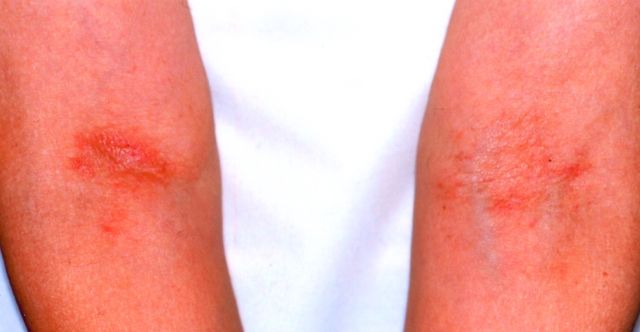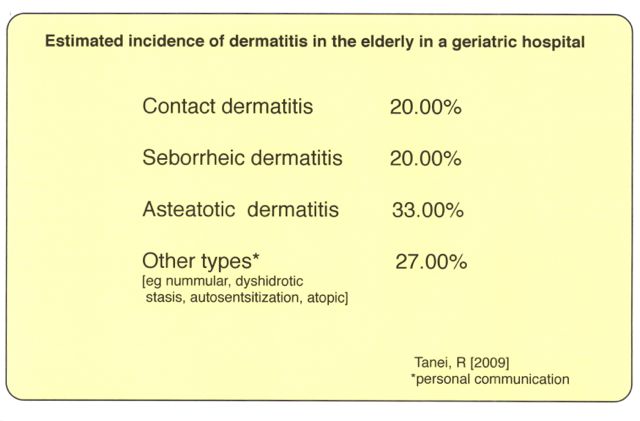Dermatitis in the elderly
The classic appearance of localised lichenified atopic eczema in the elbow folds at 81 years, recent onset
 |
with permission from Dr Ryoji Tanei, Tokyo, Japan
The atopic triad of eczema, asthma and hay-fever was first described in the 1920’s.
Atopic eczema has always been seen as a disease of childhood, characteristically disappearing later, before or during the teen-age years. Only a proportion of children continue to have atopic eczema throughout their teens and into adulthood.
In recent years, as atopic eczema has become more common all over the world, it has been increasingly affecting adults too, sometimes for the first time.
By the age of 50 adult atopic eczema has been considered to become less and less common. In the elderly, over 60 years of age, other types of eczema are more common.
 |
However atopic eczema seems now to be increasingly common also in the elderly, again sometimes for the first time. In the picture above the distribution of lichenification is the classic appearance. The atypical or "reverse" sign is seen also, and reported as characteristic of atopic eczema in the elderly.
The age of onset of atopic eczema is therefore no longer seen as a necessary diagnostic feature, and the subsequent course of atopic eczema seems to be variable. It can become characteristically chronic, or longstanding.
The Combined Approach now has an important role in the treatment of atopic eczema at all ages: in children, in adults and in the elderly.
Reference
Tanei,R Atopic Dermatitis in the Elderly Inflammation & Allergy - Drug Targets, 2009, 8,398-404
COMMENTS WELCOME....
